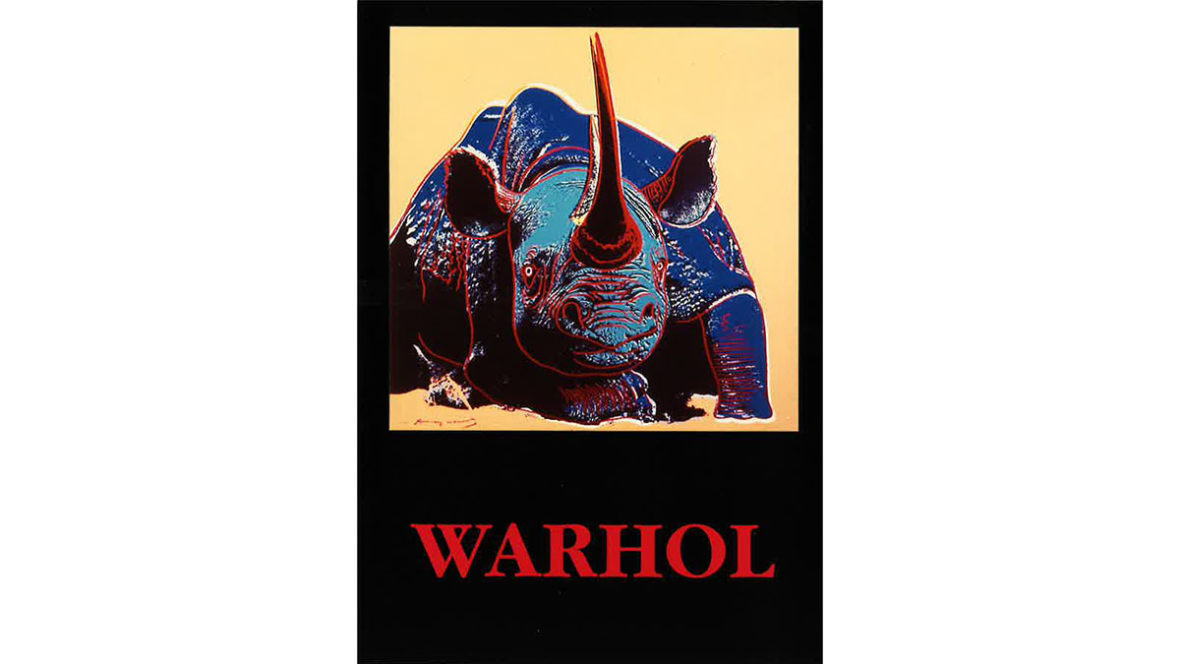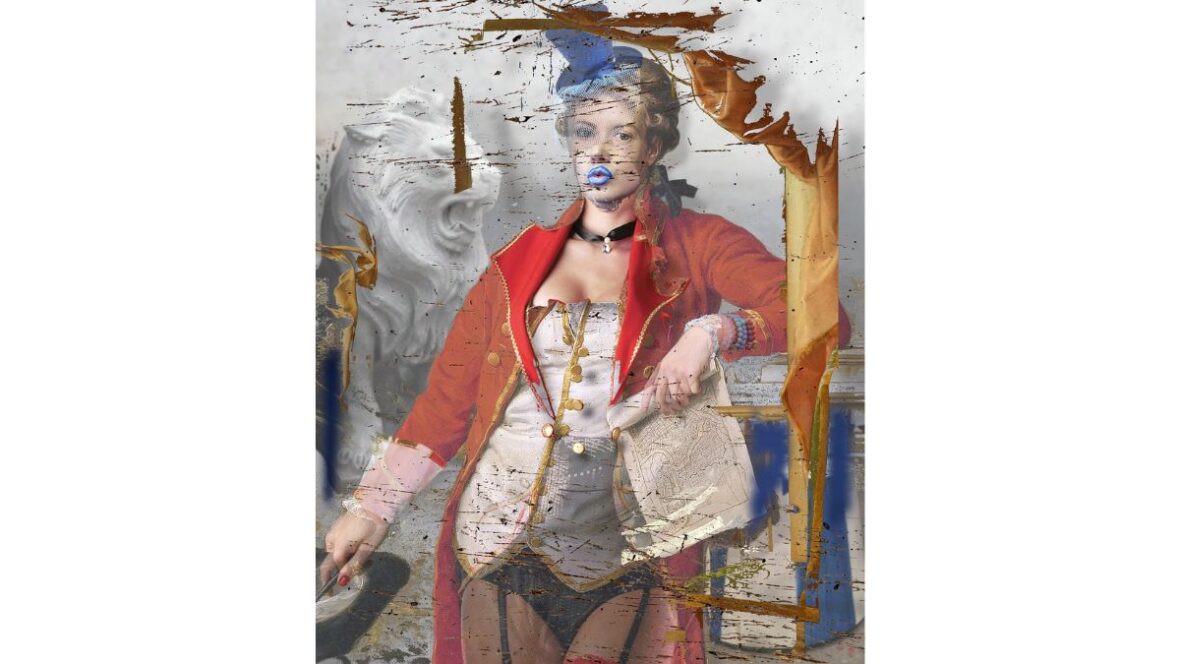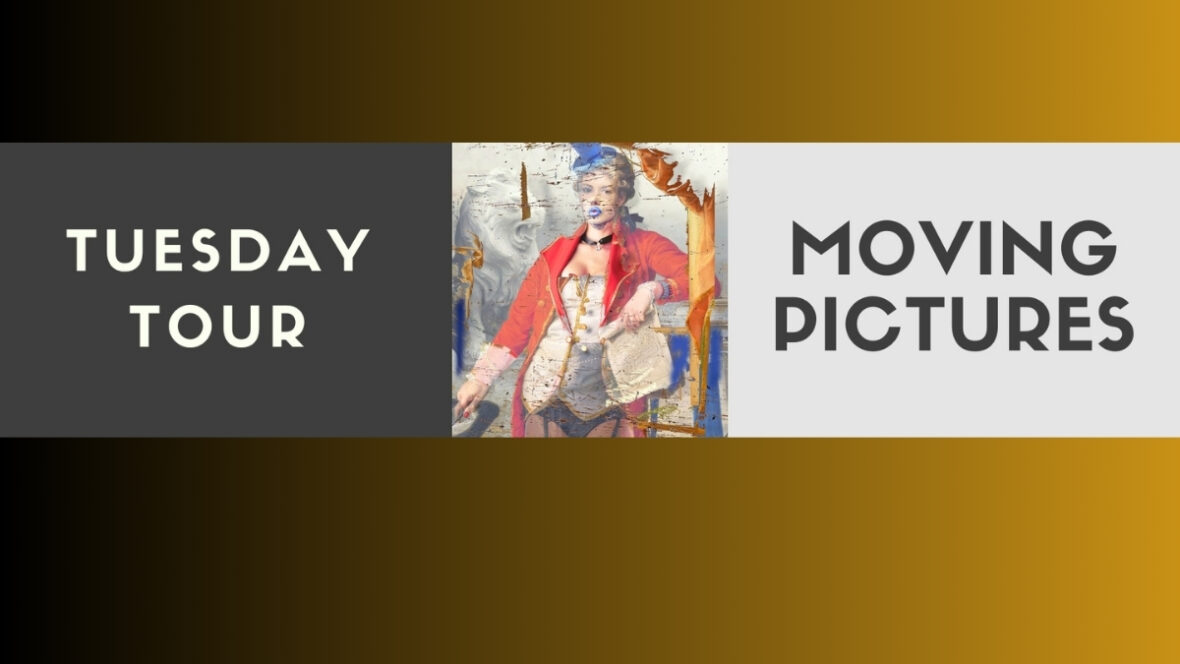Andy Warhol:
Endangered Species
Artist Bio
Andy Warhol was born Andrew Warhol on August 6, 1928 in Pittsburgh Pennsylvania of Czechoslovakian parents. He was the second of three sons. His father, Ondrej died in 1942 of drinking poisoned water while working in the coal mines of West Virginia. After school and in his spare time Warhol worked selling vegetables and later as a window display decorator in a department store. He left high school at 16 and entered the Carnegie Institute of Technology in Pittsburgh in 1945. In 1949, he received his Bachelor’s degree in pictorial design. He moved to New York at age 21 and shared his first flat with artist Philip Pearlstein. He earned his living as an advertising artist, both illustrating woman’s accessories and designing shoes. In 1960 he began to paint. His medium was silk-screen, and he explored serial painting. He became an overnight success with the Campbell soup cans. He produced images of Coke bottles, dollar bills, Brillo boxes as well as famous people and finally flowers. In the 1990’s he did portraits for rich patrons. He also went on into filmmaking. In 1963, he produced his first film Tarzan and Jane Regained … sort of. He went on to make such movies such as Eat, Sleep, Kiss, Haircut, Empire, and Chelsea Girls, among others. In 1968, he published his first novel. He also wrote America, Exposure, Andy Warhol’s Party Book and Andy Warhol-Cars. He also published a magazine called Andy Warhol’s Interview.
In 1987 the fifty-nine-year-old artist died after a gall bladder surgery. The artist bequeathed funds to establish a foundation for young artists.
Andy Warhol was a great painter of contemporary history. His subject matter is society. His art reflected the events and myths of Twentieth Century American culture. He did a skull series, a guns and knives series, a disaster series, an electric chair series, a 13 most wanted men series, a Ten American myth series, Ten Jews of the Twentieth Century series, and an Endangered Species series. It is through this observation of society that he exposed some of the underlying segments and neurosis of our time. He deals with such themes as loss, horror, guilt, and redemption that have deeper meaning than the typical go-go spirit of the Sixties. Another theme Warhol dealt with was death. His portraits are encased in black, smiling, yet inactive. His subjects are closed in within the frame, frozen in time.
Warhol captured the spirit of American consumerism. It is a portrait of almost identical objects that are pedestrian and ordinary. He depicts his objects as being mechanical, even the people, and imports them into a new level of importance. Warhol was observant enough to realize that people were conforming to the same standards. That the postwar dream of American consumerism offered security and promise for a lucrative future. He brings his factory-made objects to the forefront and redeems them for they represent American labor, and symbolize commercialism.
In trying to understand Warhol, one must realize he made no meaningful comments about his works while alive. He portrayed himself as being neutral and deliberately developed a mystery concerning and surrounding himself. He projected the image of composure and disinterest throughout his life. His paintings reveal his self- concealment. They do not depict any explicit point of view that the artist might have held. In addition, Warhol’s style complicates the issue. He is paradoxical. He overstates and glamorizes. This excess tends to obscure the issue. It makes it more difficult to reach judgments and see any clear meaning. This exaggeration accentuates the detachment of the viewer and the image. Any revelation about Warhol or his art are very subtle. His work is factual, yet overstated objective yet contrived, and both very direct, and very complicated.
Warhol’s typical style can be seen in the endangered series prints. His gaudy colors and heavy line quality make them abstract, two-dimensional and create tension. He has humanized the portraits, making them emotional and intriguing. He sees beneath the surface and reveals an inner consciousness. This exhibition is both vivid and powerful.
Warhol wanted to be rich and famous. He focused on how to address a large audience and he succeeded. He was initially a successful commercial artist who became a successful fine artist. He was very famous in the art world. But he did not conform to anyone else’s standards. He made his own rules and played by them and in the process, he changed the art world forever. The effects of his works can be seen in magazines and in art colleges. He influenced the visual art world more than any other artist of his age. Warhol is completely of his time, yet he also became an artist of consequence for all time.
Exhibition Statement
Produced in 1983, Endangered Species is a series of portraits of animals that were facing the risk of extinction at that time. These prints are representative of a style most often seen in Warhol’s later career. His use of bright colors and gestural lines adds dimension and power to the images. He made these portraits human-like, filling them both emotion and intrigue. He lets us see beneath the surface and give us the impression they are aware of their fate.
The enigmatic and controversial Warhol was among the most famous of the Pop artists. He was also recognized as an important painter of contemporary society with a knack for choosing projects which were challenging and yet accessible to large audiences.
Endangered Species is one in a series of print portfolios that resulted from Warhol’s nearly eight-year collaboration New York gallery owner Ronald Feldman. Beginning in 1980 and ending with Warhol’s death in 1987, these two leaders of the New York art community formed a creative partnership which was lucrative for Feldman and which gave a boost Warhol’s later career.
This exhibition was sponsored by the Eastern Washington University Foundation and was touring the United States under the auspices of Exhibit Touring Services (ETS), a traveling exhibition services and a program in the College of Letters, Arts and Social Sciences at Eastern Washington University.
Artist
Andy Warhol



